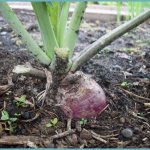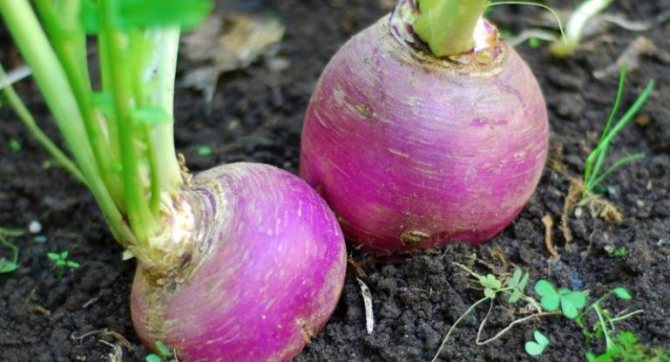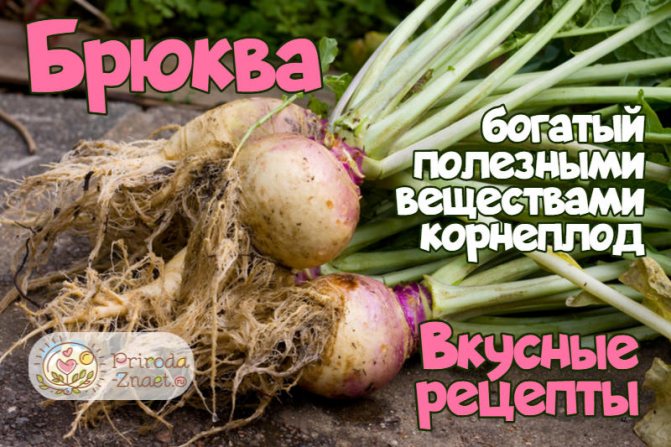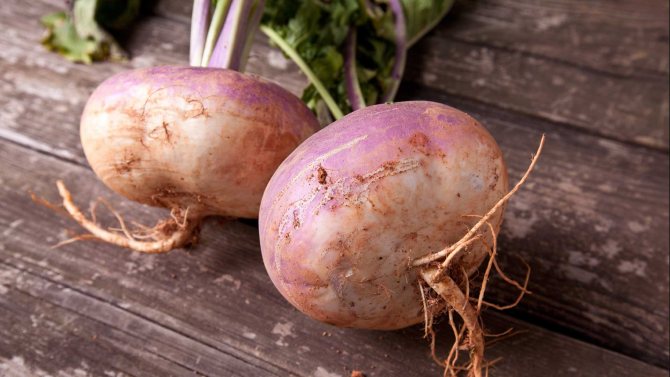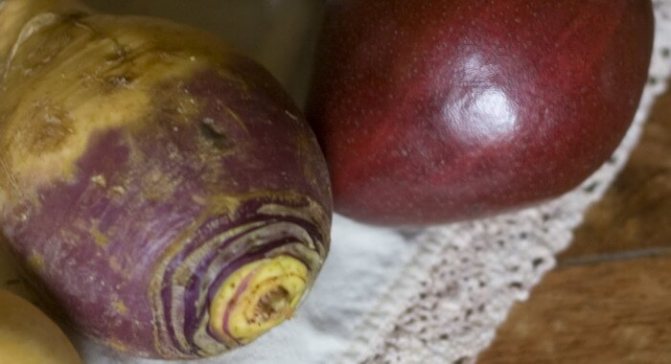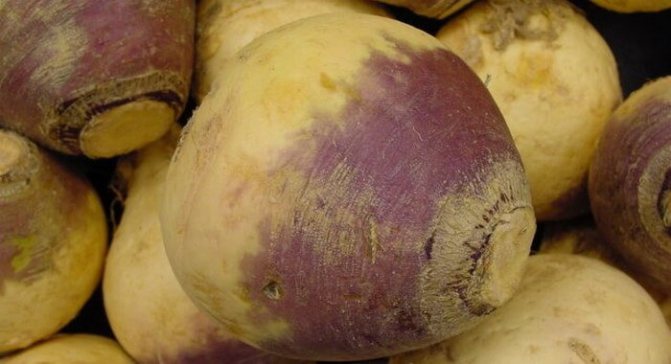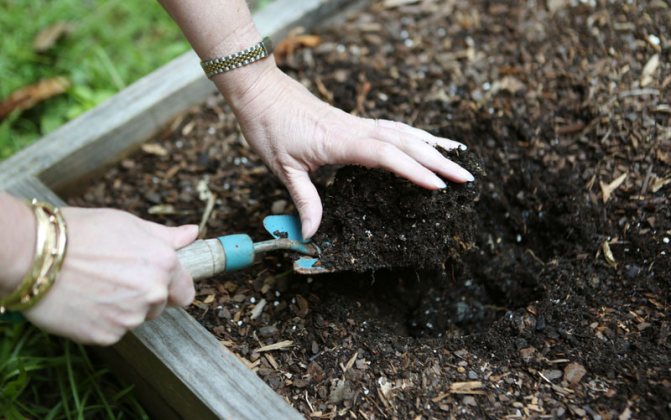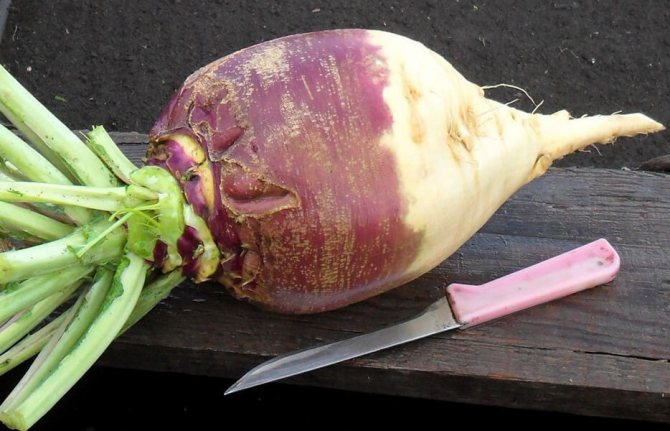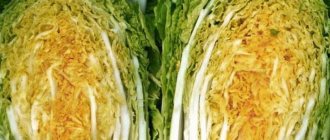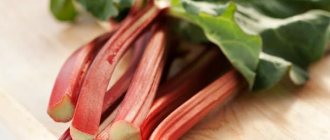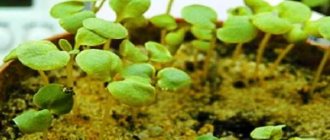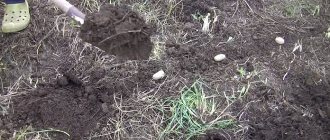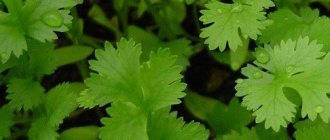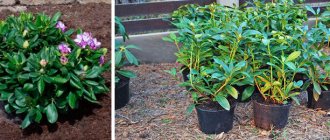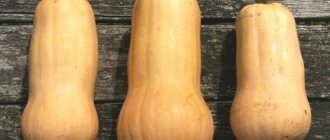Botanical name - Rutabaga (Brassica napobrassica), a biennial vegetable plant of the cabbage family of the cruciferous family, a hybrid of turnip and cabbage.
Origin - Sweden.
Lighting - photophilous, plant of long daylight hours.
The soil - sandy loam, loamy.
Watering - hygrophilous.
Predecessors - cucumber, onion, tomato, potatoes.
Landing - seeds and seedlings.
Requirements of swede for growing conditions
Botanically, rutabaga is a close relative of turnip and cabbage, and in many ways is similar to them. Passing through a two-year development cycle, rutabaga in the first year forms a root crop and a leaf rosette, and in the second, it blooms and is seeded. There are three major mistakes to avoid in order to harvest rutabagas.
Mistake # 1. Growing on acidified soils.
Rutabaga is more resistant to high acidity than turnip or cabbage. However, the reaction of the soil solution below 5.5 is extreme even for her.
Mistake # 2. Insufficient hydration.
Rutabaga does not tolerate soil drought. Dryness of the soil, especially in the first and last months of the growing season, leads to a loss in the quality of root crops.
Mistake number 3. Excessive hydration.
On waterlogged soils with poor aeration, the swede suffers from bacteriosis and rots.
How to choose and store
The vegetable is sold raw. To choose a quality product, there are a few things to keep in mind. First of all, you need to remember that you should pay attention to root crops with a smooth and hard surface. The vegetable should have several leaves and fibrous roots.
Do not choose soft and damaged specimens, as they can be spoiled on the inside.
If the fruit is very light, it is most likely empty or porous and also has tough fibers. Such a product tastes sharp and hardly anyone will like it.
Overripe rutabaga is characterized by a tart taste, while mid-season vegetables have a sweeter taste.
The plant product is stored in the refrigerator, in the vegetable compartment or in the cellar.
Overview of Russian varieties of rutabagas for table use
- Western European. Has a slightly raised rosette of leaves, which are most often dissected, or pubescent / glabrous. The root crop of the Western European rutabaga is shallowly submerged in the soil. The pulp is very juicy and strong. Depending on the color of the pulp, Western European rutabaga is divided into two subspecies: white meat and yellow meat. The first has a root crop of such forms: oval, round, pear-shaped. The bark is without veins, purple or green. The pulp, respectively, is white, but the taste is worse than yellow meat. Yellow-meat has a flat-round or cone-shaped root crop. The bark (top) is green. The pulp is yellow and extremely tasty. This variety of Western European rutabagas is represented mainly by forage varieties.
- North European. Has a strongly pressed leaf rosette. The leaves are dissected. Small / medium sized fruits. The bark at the bottom of the root vegetable has a strongly pronounced reticular structure. The flesh of the fruit is yellow in color with an excellent taste.
- Siberian. It is very similar in its external characteristics to the number one in the classification, but still the Siberian rutabaga is a hybrid.It features a strongly pressed socket (most often without tongues). The root crop is conical, round and at the same time slightly flattened. The bark is gray-green. The pulp is yellow, aromatic and tasty.
Rutabaga in the open field
To understand exactly what is the difference between the main types of rutabaga, look for comparative photos on the Web.
Rutabaga is mainly cultivated in two types: dining room and fodder. The dining room has yellow pulp (most often) with a delicate taste. The following table varieties of rutabagas are very popular: Krasnoselskaya (mid-early), Swedish (early), Kohalik blue (mid-season), Marian, Ruby, etc.
The forage varieties are a cross between table rutabagas and forage cabbage. They differ in good taste, are not so demanding on growing conditions and are more productive. The most popular fodder varieties of swede include: Hoffman, Vyshegorodskaya, Bangolm, etc.
Rutabaga is grown for dining and forage needs (forage varieties are not suitable for food). In table varieties of root vegetables, the pulp is tender, juicy, with a pleasant aftertaste.
Rutabaga table grade 'Krasnoselskaya'
A table variety with a medium early ripening period: from the emergence of seedlings to the formation of root crops, it will take 90-120 days. The pulp is sugary, yellow. A flat-round root crop, gray-green in color, weighing from 300 to 600 g. It is well stored in winter.
Rutabaga grade 'Krasnoselskaya'
Rutabaga table grade 'Novgorodskaya'
Mid-season: from the appearance of mass shoots to the formation of a root crop, it will take about 120 days. The root crop is rounded-elongated, the upper part is violet-bronze in color. The pulp is dense, juicy, without bitterness. On average, the weight of a root crop is about 400 g.
Rutabaga grade 'Novgorodskaya'
Rutabaga table grade 'Gera'
Mid-season table variety: the period from mass shoots to technical ripeness of root crops is about 85-90 days. Root crops are round, weighing about 300-400 g, with good taste (the pulp is tender, juicy).
Rutabaga grade 'Gera'
The choice of domestic varieties of swede is not particularly large: only 6 are included in the State Register, but they can be grown in all regions.
- Western European. Has a slightly raised rosette of leaves, which are most often dissected, or pubescent / glabrous. The root crop of the Western European rutabaga is shallowly submerged in the soil. The pulp is very juicy and strong. Depending on the color of the pulp, Western European rutabaga is divided into two subspecies: white meat and yellow meat. The first has a root crop of such forms: oval, round, pear-shaped. The bark is without veins, purple or green. The pulp, respectively, is white, but the taste is worse than yellow meat. Yellow-meat has a flat-round or cone-shaped root crop. The bark (top) is green. The pulp is yellow and extremely tasty. This variety of Western European rutabagas is represented mainly by forage varieties.
- North European. Has a strongly pressed leaf rosette. The leaves are dissected. Small / medium sized fruits. The bark at the bottom of the root vegetable has a strongly pronounced reticular structure. The flesh of the fruit is yellow in color with an excellent taste.
- Siberian. It is very similar in its external characteristics to the number one in the classification, but still the Siberian rutabaga is a hybrid. It features a strongly pressed socket (most often without tongues). The root crop is conical, round and at the same time slightly flattened. The bark is gray-green. The pulp is yellow, aromatic and tasty.
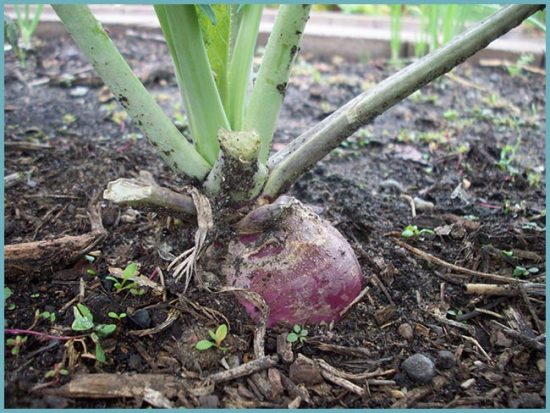
Rutabaga in the open field
| Variety name | Root characteristic | Average root weight, g | Ripening period |
| Novgorod | The shape is elongated-rounded, the peel is anthocyanin-colored. The pulp is tender, yellow-meat, juicy. | 400 | 120 days |
| Vereiskaya | Flat-round shape, peel with intense anthocyanin color. The pulp is yellow-meat, tender, juicy. | 250-300 | 83-90 days |
| Child love | Round shape, weak anthocyanin coloration. The pulp is yellow-meat, very tender, juicy. | 350-400 | 90-117 days |
| Hera | Round shape, strong anthocyanin coloration. The pulp is tender, yellow-meat, juicy. | 300-400 | 85-90 days |
| Bright dream | Variety of 2020, elongated shape, yellow color without anthocyanin. The pulp is juicy, yellow-meat, tender. | 300-350 | 65-70 days |
Yellow-meat varieties of rutabagas are of the table type, white-meat varieties are of the fodder type.
Useful properties of swede - the composition of vitamins and minerals
The beneficial properties of swede are due to its high content of vitamins and minerals. There is more vitamin C in this vegetable than in beets, cabbage, carrots, there are vitamins PP, B1, B2, B6, carotene, as well as potassium and calcium salts, iodine, a large amount of fiber.
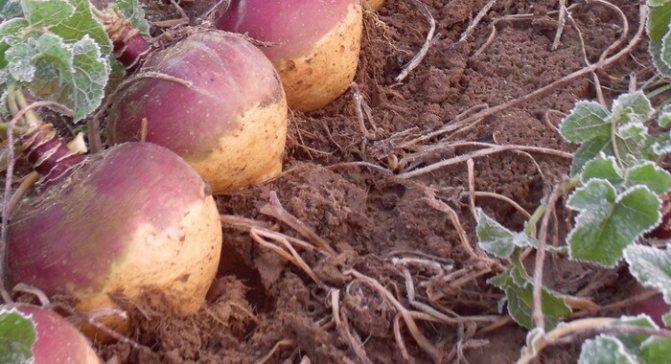

The vegetable is low in calories (37 kcal per 100 g), has a diuretic effect, improves digestion and intestinal motility, therefore it is recommended for obesity. Root crops contain mustard oil, which gives them a unique taste and bactericidal properties. The benefits of rutabagas and dishes made from it are especially great in winter, since the vitamin C contained in it decomposes little during storage and cooking. It is useful for atherosclerosis, chronic constipation, diabetes mellitus, but not indicated for acute diseases of the gastrointestinal tract.
Preparing the soil for planting rutabagas
It is necessary to start preparing for sowing swede in the fall. To do this, carry out the following series of operations:
- After harvesting the predecessors, the site is freed from plant residues and weeds, sown with siderates: phacelia, vetch-oat mixture, clover, lupine.
- After regrowth, the siderates are cut with a flat cutter and left in the garden in the form of mulch.
- In early spring, after snowmelt, the bed is harrowed with a rake along with half-rotted green manure to a depth of 3-5 cm.
- When the soil is ripe and stops sticking to the tool, and the first weeds germinate, the bed is treated with a flat cutter, weeds are selected and spilled with a solution of the Baikal EM-1 preparation. You can sow rutabagus on a site prepared in this way in a week.
Before sowing swede, acidic soil must be deoxidized with dolomite flour.
Top dressing of swede with boric acid on the leaf accelerates the ripening of the root crop and its sugar content.
For normal growth, the swede needs sufficient moisture, but not waterlogging. Therefore, rutabagas are watered only 3-5 times during the growing season, but in large quantities. Water consumption - 10 liters per 1 m2. Much attention must be paid to maintaining moisture in the soil. To do this, it is advisable to start mulching the swede immediately after germination. As mulch, you can use:
As the swede grows, the layer of mulch must be increased. This technique will help not only preserve soil moisture and normal air exchange in the upper layer of the soil, but also provide protection from weeds and feeding the swede with carbon dioxide.
There are two methods: seedling (directly into open ground) and seedling.
In open ground
As mentioned above, in the middle lane, seeds are sown directly into the open ground. This requires:
- Prepare the soil. Improve if necessary by adding peat or sand. Dig up the soil, remove weeds and roots. Fertilizing before planting can only be done with humus or compost.
- Prepare the seeds. Before sowing, they can be heat treated for 30 minutes by placing them in water with a temperature of about 50 degrees.
- Make grooves in the garden bed (groove depth no more than 2-3 cm).
- Sow seeds (per 1 meter, on average 20 seeds). Sprinkle the seeds with earth and cover the garden bed (with foil or spunbond).
On the 5th day, seedlings already appear, which can be thinned for the first time when 3-4 leaves appear. The distance between the plants when thinning is 5-6 cm.The second time, thinning is carried out when there are already 5-7 leaves on the plants, while leaving a distance of 15-20 cm between them.
Seedlings
When growing rutabagas seedlings, the work algorithm is as follows:
- Choose a place for boxes with seedlings (cool, so a veranda or balcony is suitable, because good, strong, viable seedlings will not grow in a warm place. The depth of boxes for seedlings is 10-15 cm).
- Cooking seeds and soil (as in the seedless method).
- Sow seeds in boxes (the distance between seeds is 3-4 cm) and sprinkle with earth (the depth of seeding is 1-2 cm).
- Water the soil and cover with foil or glass (do not open until germination).
- When seedlings appear, the film is removed, and when young plants have from 3 to 5 true leaves, they are planted in separate peat pots before planting in open ground.
- In 30-40 days after the emergence of seedlings, plant seedlings in open ground (form holes in the beds, the distance between the holes is 15-20 cm, the distance between the rows is about 60 cm).


As mentioned earlier, rutabaga is absolutely not afraid of the cold, so its seeds begin to sprout at temperatures even several degrees above zero. So, the first step is to sow the seedlings either on the windowsill or in the greenhouse. After about a month and a half, when the seedlings sprout up a little and they have several leaves, you can plant them in open ground.
The optimal time for planting a plant in open ground is spring (first decade of May). But these terms are not strict, since everything depends to a large extent on weather conditions. Fertile soil is best suited for rutabagas: sandy loam, loamy or peat (always cultivated).
The site for rutabagas must be prepared in advance: dug up, saturated with compost / manure (at least 3 kg per square meter of soil), urea (at least 15 g per square meter) and salts - phosphate or potassium (at least 30 g per square meter) ...
In the prepared soil, we make small holes at a distance of about 25 cm from each other. The distance between the rows is at least half a meter. Wells before planting seedlings must be watered with water. We prepare a clay "chatterbox" and dip each root into it before planting seedlings, cut off the leaves a little. Do not plant seedlings too deep in the soil. Be sure to lightly tamp the ground and water the planted seedlings.
Advice. In order for the rutabaga crop to be rich, it is important to choose the right soil for planting it. It should perfectly allow moisture to pass through, but at the same time not allow the plant to sour. And this means that alumina, sandstone and soil with closely located groundwater are categorically not suitable for seedlings.
Care rules
In order for the seedlings of rutabagas to be “good-quality” and the harvest to be “rich”, the rutabagas require competent and timely care, such as: good fertilizing with fertilizers, prevention of possible diseases, etc.
Rutabaga leaves
It is as easy as shelling pears to take care of the seedlings of swede in the open field: you just need to perform all the basic procedures familiar to every gardener - watering, hilling, loosening the soil, feeding and protecting from pests. Then the reproduction of the plant will be carried out at a rapid pace. The last two processes will be discussed below, but for now let's talk about physical tillage.
So hilling. It is important to do it on time, namely when the rosettes of the covering leaves are formed. The first loosening of the soil is carried out literally a couple of days after planting the plant. This must be done very carefully, immersing the hoe to a depth of no more than 5-8 cm. In general, during the breeding period of the swede in the open ground, loosening should be carried out about 5-6 times, carrying it out in parallel with weeding the soil.
Since the swede loves moisture very much, watering the plant must be carried out regularly, but do not overdo it (otherwise the fruits will become too watery) - 5-6 waterings per season will be enough for the swede. How to properly water the swede? One square meter should consume about 10 liters of water.
Advice. In order not to reduce the nutritional value of the fruit, watering the swede should be done in a special way: water should not fall on the root crop from above and wash away the earth from there.
For swede, generous fertilization with various minerals and nutrients is required.So, already 14 days after the seedlings are planted in open ground, it is necessary to feed it with slurry from manure after the soil is abundantly watered.
The next time you need to fertilize the rutabagas after it has formed a small root crop. We use minerals for feeding. For example, rutabaga reacts very well to copper, potassium, phosphorus (it is advisable to use it, since it significantly increases the sugar content of the fruit), boron (thanks to it, the pulp remains light and aromatic).


Rutabaga leaves
Easy care when growing a swede consists of watering, feeding and creating a comfortable temperature, weeding and loosening the soil.
Too hot weather can prevent you from getting a good harvest of rutabagas. At prolonged air temperatures above 21 ° C, root crops do not gain full flavor and become dryish. The best specimens are obtained when grown at temperatures up to 18 ° C.
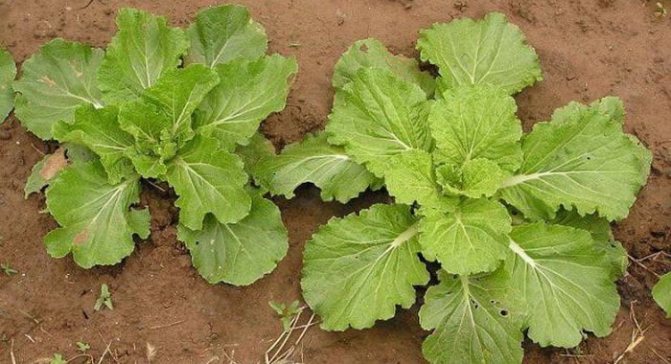

Weeding and loosening the soil are carried out after rain, especially in the first period of plant formation, so that growth does not slow down in any way.
Watering is carried out moderately, do not allow the soil to dry out or waterlogging. You will need about 10 liters of water per 1 m2. Improper care, or rather a lack of moisture, will lead to the rapid flowering of a plant with an unusable root crop.
Fertilization is required infrequently, only 2-3 times in the first half of summer. As a top dressing, you can use both organic fertilizers and mineral fertilizers, for example, a mixture of ash and superphosphate. When buying a ready-made complex fertilizer, you need to check if it contains:
- calcium;
- manganese;
- copper;
- phosphorus (increases sugar content);
- boron (with a shortage of it, the pulp of the root vegetable will become fresh and brownish).
When caring for the turnip, it is worth remembering that fresh manure cannot be brought into the soil, since it will make the pulp of the root vegetable porous and dryish.
Rutabaga is easily attacked by pests and weakly resists diseases that it has in common with cabbage. The cruciferous flea beetle can be removed with ash scattered in the aisles, mixed with ordinary road dust. The cabbage fly is afraid of naphthalene, which is also scattered between the rows, mixed with sand in a ratio of 1/10.
Subject to the cultivation techniques and the correct choice of the planting site, caring for the turnip does not present any problems even for novice gardeners. It includes regular watering, soil work and systematic top dressing. Basic care requirements:
- Rutabaga is a moisture-loving culture, but stagnant water in the soil and regular waterlogging leads to watery roots. Watering is carried out only 3-5 times per season; in dry weather, the intensity of the procedures should be increased. The recommended water consumption is 10 liters per 1 m2. Water the plants carefully so as not to wash out the soil from the top of the root;
- the first feeding should be carried out in the spring 2 weeks after transplanting the seedlings. For this, organic matter is used, for example, a mullein solution in a ratio of 1:10. The second application occurs at the beginning of active root growth in the second half of summer. Only phosphorus-potassium mixtures should be used. When growing a vegetable in depleted soil, unscheduled feeding with complex compositions for vegetable crops is allowed throughout the season;
- soil care is reduced to regular weeding, loosening and hilling of row spacings. The procedure should be carried out after each watering of the planting. The soil should be loosened carefully to avoid mechanical damage to the roots.
the first feeding is carried out with slurry 14 days after planting the seedlings in the ground, the second - with mineral fertilizer, when the root crop begins to form.
Rutabaga in the garden
Watering. Rutabaga loves water. It should be watered at the rate of 10 liters per 1 m².If there is not enough moisture, you risk getting a tough and bitter root vegetable that will bloom quickly.
Ways to protect rutabagas from pests
Rutabagas, like turnips, can be sown in two periods. Sown in early spring, this crop matures in summer and is used immediately. Sowing in summer produces crops that can be stored in the fall. The specific sowing dates are determined based on the ripeness of the soil and weather conditions. The time of activity of the cruciferous flea, which can severely damage seedlings, is also taken into account. From this point of view, sowing in a cool way, while the air temperature does not exceed 15-18⁰С, can be considered the most acceptable.
Rutabaga is usually sown in rows in grooves with a depth of 2-3 cm. The rate of seed consumption is 20 seeds per running meter. More frequent sowing will lead to the need for early thinning, which injures the seedlings. Since swede seeds are very small, it is preferable to sow them in a mixture with some kind of ballast - for example, with dry sand. The bed can be covered with spunbond on top.
Rutabaga is a crop that often suffers from insect infestations. The main pests of swede include:
- cruciferous flea;
- cabbage fly;
- slugs;
- fire flames;
- aphid.
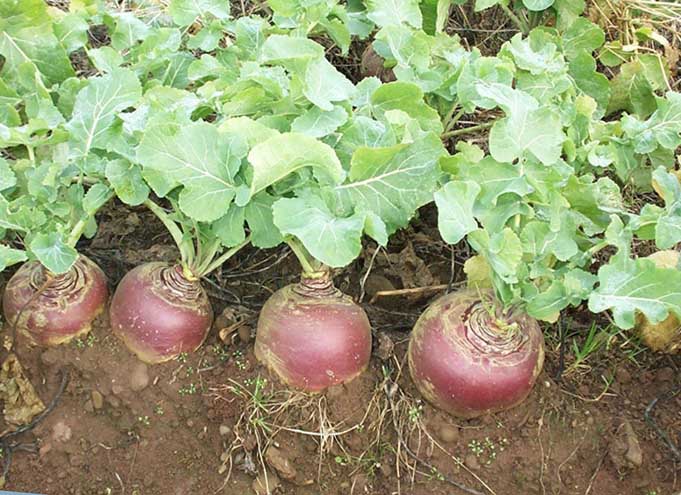

Planting can be protected both with the help of insecticides and folk methods. Of insecticides, biological products are preferable - Fitoverm, Bitoxibacillin, Lepidocid. They are safe for humans and the environment and do not accumulate in root crops. Simple folk remedies also have a certain protective effect - dusting with fine wood ash, tobacco dust, red pepper or mustard.
To protect the swede from slugs, beer traps are used, buried along the perimeter of the garden.
The first step in the fight against pests and various diseases will be to sprinkle ash on the seeds of the swede within a few days after sowing. This procedure will protect future seedlings from cruciferous fleas. All those pests are dangerous for rutabagas as for turnips, cabbage, etc. These are keels, whites, slugs, aphids, fleas, etc.
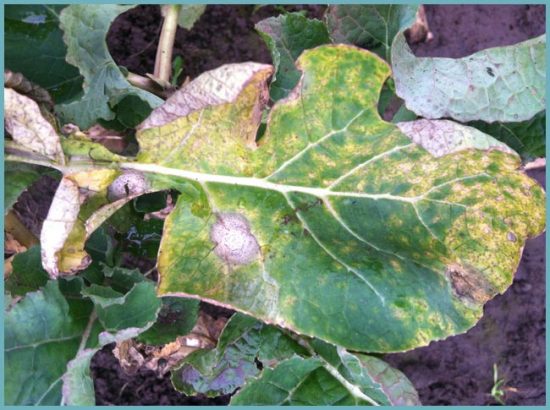

Phomosis disease
Preventive measures for pest control:
- compliance with crop rotation;
- disinfection of seeds before planting in the ground;
- thorough and regular weeding of the plant;
- cleaning the soil from the remains of other plants before planting swede;
- deep digging of the soil;
- planting compatible plants.
Advice. Many pests will absolutely not be afraid of rutabagas, if, along with the observance of the agricultural technology of growing this plant, high-quality and sufficient feeding is carried out.
Phomosis disease
Advice. Many pests will be absolutely not afraid of rutabagas, if, along with the observance of the agricultural technology of growing this plant, high-quality and sufficient feeding is carried out.
Rutabaga belongs to cold-resistant crops, which entails the feature of early planting. For seed germination, the required soil temperature is only 2 degrees (but the best temperature is considered to be from 12 to 17), while it can easily tolerate frosts down to -2 degrees.
Based on this temperature regime, the best region for growing rutabagas is the middle lane and the northwest region. In these places, rutabagas are grown from the end of April.
If there is a desire to grow this crop in the southern regions, then it is better to take varieties that ripen faster (70-90 days). If the seeds are sown early, then the crop can be removed before the onset of heat.
In the northern regions of our country (as well as in Siberia and the Urals), in the harsh natural conditions of summer residents, every day is important. To obtain a harvest, rutabagas are sown for seedlings in early April (otherwise the root crop will not have time to ripen), and planted in open ground closer to June.
Attention! A plant is transplanted into the ground, which already has 3-4 leaves.
Botanical description
Rutabaga (Latin Brassica napobrassica) is a biennial cross-pollinated plant, which belongs to the Cabbage or Cruciferous family. The vegetable has a high yield and cold resistance.Rutabaga is not a type of industrial crop that provides raw materials for the food industry. Technically, there are two types of swede:
- dining room - eaten by humans;
- fodder - goes to feed animals, is a cross between fodder cabbage and table rutabagas.
There are no wild varieties of the plant.
Fertilizers to increase the yield of swede
For good growth of the rutabaga root crop, a soil rich in nutrients is required. Organic fertilizers for this crop are well suited:
- mature plant compost (3 kg per 1 m2);
- sapropel grade A (4-5 kg per 1 m2);
- composted peat (3 kg per 1 m2).
It is better to fill the soil with organic matter in the fall, since the turnip loves a well-rotted substrate. Fresh manure cannot be used - it makes root crops twisted and hollow, impairing their keeping quality. Of the mineral fertilizers, potash is the most useful for rutabagas. Potassium increases the resistance of root crops to disease and contributes to the accumulation of sugar in them. However, going over this element leads to the opposite result - the formation of a coarse fibrous pulp with a bitter taste.
Application
Due to its rich vitamin and mineral composition, unusual taste, rutabaga is used both in cooking and in folk medicine.
In cooking
Raw root vegetable is sweet, juicy, aromatic.
When cooked, it resembles potatoes, so it can replace it in salads and side dishes. Baked rutabaga is a healthy and tasty treat.
Rutabaga is eaten fresh, boiled, stewed, used to make juice. With the addition of vegetables, fritters and cutlets are fried, porridge, soups, and pie fillings are prepared.
Rutabaga goes well with other vegetables, especially potatoes and cabbage. Regardless of the method of preparation, it serves as an excellent low-calorie side dish for meat and fish dishes.
In folk medicine and cosmetology
In folk remedies and cosmetics, juice and crushed rutabaga pulp are used.
Gruel, mixed with honey in a 2: 1 ratio, relieves colds and SARS. You need to take one teaspoon of the product before meals with plenty of water.
Gently solves the problem of constipation by eating 100-150 g of baked turnip every other day.
Compresses from grated root pulp will help to cope with minor burns, purulent rashes and skin lesions.
With acne, it is recommended to wipe your face at night with rutabaga juice.
To moisturize dry skin 2-3 times a week, apply a mask of mashed vegetable pulp and an equal amount of sour cream for 15 minutes.
Work plan for growing swede
| Event duration | Event |
| End of August - beginning of September |
|
| October |
|
| Spring, after the snow melts. |
|
| Spring, after warming up the soil to 5⁰С. |
|
| Emergence of seedlings |
|
| The appearance of 2-3 true leaves |
|
| Closing the tops |
|
| Active formation of root crops |
|
conclusions
- Rutabaga is a root vegetable crop. It is used in cooking and medicine. Depending on the purpose, the variety can be table or fodder.
- Sowing seeds is carried out by seedling method 40-50 days before transplanting into open ground.Landing for the winter is possible.
- The growing area should be well lit. A well-aerated and fertile soil with a neutral reaction is recommended.
- For the growth and development of swede, regular and moderate watering is required with a frequency of up to 5 times per season, systematic feeding and work with the soil.
- The crop is harvested in the fall before the frost begins. Root vegetables can be stored on a shelf in the basement or cellar, or in a box with sand or sawdust.
Possible combinations with other plants
There is an excellent combination of swede with any kind of salad, herbs (mint, sage, wormwood). Marigolds, marigolds can be planted not far or between the rows of rutabagas - they will scare off many pests (aphids, whites, cabbage flies).
You can also go the other way and plant plants next to the turnip that will lure insects that prey on pests (ladybugs, mosquitoes, lacewings, etc.) - dill, carrots, celery.
In no case should rutabaga be planted in those places in the garden where crops close to it used to grow: cabbage, radishes, etc. But nightshade, pumpkin and legume predecessors are fine.
Harvesting takes place 24 weeks after planting if you want to enjoy the vegetable in the fall and after 32 if you plan to stock up on winter. If the planting is carried out in early summer (relevant for the northern regions), then in the fall it will also be possible to eat rutabagas or even save it until next spring.
So our article has come to an end. We have introduced you to detailed information on how to properly plant rutabagas, take care of it, water, fertilize and much more. We hope the information provided will be useful to you. We wish you a rich harvest!

